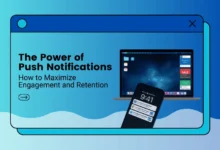Leading the Learning Curve: SEO & Marketing Insights for Schools

Unlike traditional marketing tactics that reach a broad audience of prospective students without any insight into their interests, SEO provides schools with the ability to target their messages. This can lead to more inquiries, tours, and enrollments!
Keeping up with the latest SEO trends and best practices yearly can help your school stand out in search engine results pages. Read on to learn more about the basics of performing SEO and how it can impact your enrollments.
Keyword research
Keyword research is the process of identifying the terms that people use to search for your products or services online. It’s the foundation of any effective SEO strategy. A school marketing agency can help you with this important SEO task.
High-quality keywords can drive traffic and engagement to your school website, which ultimately leads to a higher conversion rate. However, the keyword research process can be time-consuming and tedious. A professional keyword research service can save you time and effort, while ensuring that your school’s website ranks well in search engines.
Using the right tools can help you identify the keywords that are most relevant to your students and prospects. For example, using an SEO tool like Semrush can provide you with a list of relevant keywords that have low competition rates and high search volume. You can then prioritize these keywords and create content that aligns with them. This will improve your chances of ranking for a featured snippet, which is a prominent position on Google’s search results page (SERP) that drives more organic traffic to your site.
On-page optimization
On-page optimization is a practice that affects individual pages on your website. It involves editing key elements on your web pages like title tags, meta descriptions, and page content to improve search visibility. On-page SEO isn’t just about repeating keywords (that’s called “keyword stuffing” and can actually damage your rankings). It’s about smartly incorporating keywords in ways that make sense for the user. Most SEO service companies offer on page seo in their packages.
Start by conducting keyword research to identify the most relevant terms for each of your website’s web pages. Then, optimize the content for those words. This is important because it’s what tells Google what your site (and individual pages) are about. It’s also what’s displayed in the search results, encouraging click-throughs.
Technical SEO
An SEO-optimized school website is the foundation of any digital marketing strategy. But the work your team puts into keyword research, on-page optimization, and technical SEO can all be for naught if your site’s architecture doesn’t allow search engines to find your content.
The right URL structure makes it easy for visitors to identify the topic of a page, and search engine algorithms reward pages with short, descriptive URLs that help them understand what the page is about. This is why it’s important to use keywords in your URLs, and keep them short, as much as possible.
Thorough keyword research, on-page and off-page optimization, and high-fidelity content can help your school rank in SERPs for relevant searches. But it’s important to remember that Search Engine Optimization is a marathon, not a sprint. With time and consistent effort, your SEO efforts will continue to pay off. So don’t give up! Keep reading to learn more about the role that SEO plays in attracting students to your institution.
High-fidelity content
As the name suggests, high-fidelity design delivers prototypes that are more realistic and closer to the final product’s design. This includes content, visual styles, and interactions. They are often created after a team has aligned around topics, like structure, using lower-fidelity wireframes.
Consider Learning Styles
People have different ways they focus and learn, including their preferred environment and time of day. Understanding these factors can help you find the best talent-development strategies to fuel your staff’s growth.
For example, if an employee is on the cusp of transitioning to manager, you might design a leadership development program that emphasizes building the skills and capabilities they will need in their future role—such as gravitas and empathy. The program could run 6 to 18 months before their transition, giving them the chance to practice these new behaviors in a risk-free way. This allows them to gain confidence in their ability to perform at a higher level. It also improves morale, cohesive communication, successful collaboration, and general job (and life) satisfaction.






